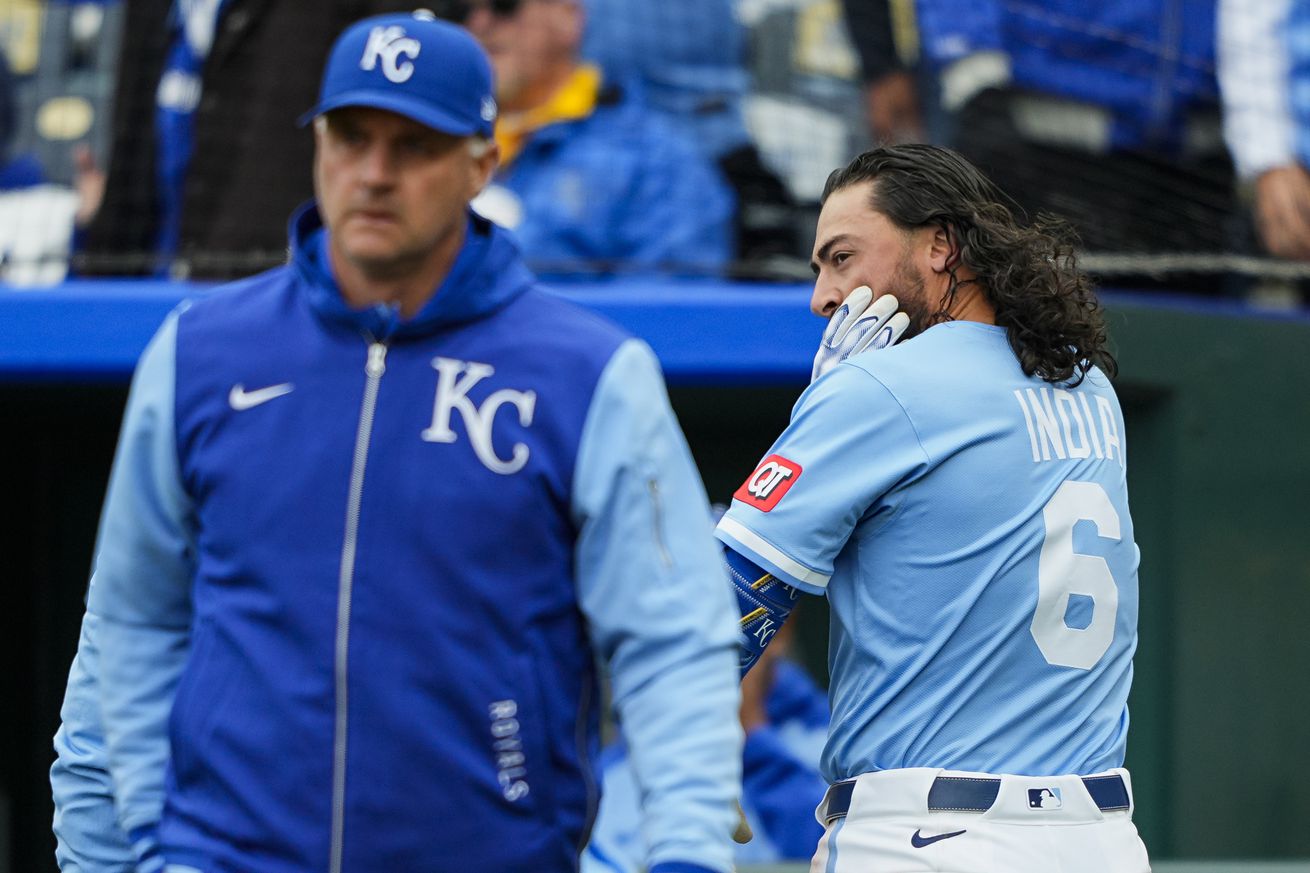
Safety and common sense
The essence of baseball is some guy trying to throw a ball past another guy who is trying to hit said ball with a stick. Sometimes, the guy who is throwing the ball misses their intended location. In some of those situations, the ball could hit the other guy with the stick, who is standing pretty close to the intended location of the thrown ball, after all. This is unavoidable and is part of the fabric of the game.
For professional baseball, however, the consequences of this happening are high. Not so much for the pitcher—if a pitcher hits a batter, the batter takes first base, no different than a walk or a single—but very much for the batter. In the modern game, pitchers throw baseballs at speeds up to and sometimes exceeding triple digit miles per hour.
And when it goes bad, it gets scary real quick. Consider Sunday’s game, where Cleveland Guardians closer Emmanuel Clase hit Kansas City Royals left fielder Jonathan India in the head with a 99 MPH fastball. India promptly exited the game.
The good news here is that India didn’t suffer a concussion or other injury and was back in the lineup less than 24 hours later for Monday afternoon’s game. The bad news here is that, as Royals hitter Vinnie Pasquantino succinctly put it, India “got hit in the fucking face.” This came one pitch after Clase sent a very similar pitch up and in, closely missing India’s head, as Pasquantino also pointed out.
India was clearly pissed about it, yelling after walking off and staring daggers at Clase from the dugout. Pasquantino was clearly pissed about it from his crystal-clear comments. The crowd was clearly pissed about it, as they boo’d Clase for the rest of the half inning. Clase says that the pitches were unintentional.
Clase said he texted catcher Salvador Perez after the game to check how India was doing, and to apologize to India and the Royals’ clubhouse for the hit-by-pitch. Clase relayed to Perez that it was not intentional, and that the pitch slipped out of his hand.
It was 45 degrees at first pitch on Sunday, which affected Clase’s ability to grip the baseball.
“I [texted Perez], ‘Please just check on him and say that it wasn’t intentional,’” Clase said through interpreter Nelson Pérez, the Guardians strength and conditioning coach. “It was just a pitch that slipped out of my hands.’”
Clase had no reason to intentionally plunk India here; they’ve got no past history and this was the last half inning of a cordially played series. But the “did he or didn’t he” inevitable part of every prominent hit-by-pitch storyline highlights two core problems with the whole thing.
One, intentional hit by pitches are physically indistinct from unintentional ones. As I said in the first paragraph: sometimes you hit a guy with a ball because you missed your spot. And because of this, retaliation is a thing that happens because no one fesses up to intentionally hitting a batter when there is so much plausible deniability.
Like, we know how this is going to go: the next time Cleveland and Kansas City play, a Royals pitcher is going to hit a Guardians batter, Cleveland is going to get all pissy about it, Anne Rogers will ask the Royals pitcher if they meant to hit the Guardians batter and the pitcher will say “No, of course not” and no one will really know for sure but we’ll know for sure, sort of. It will be exhausting.
Two—and more importantly—the consequences are unequally stacked where the hitters have the worse outcomes when a hit by pitch occurs. Technically speaking, the pitcher gets a HBP on their statline and the batter they hit with a pitch gets a free base. In reality, that is a nothingburger of a consequence when one team has a big lead.
Meanwhile, there is a serious risk for batters: injury. Concussions, broken jaws, and broken fingers or hands aren’t a very good trade for sending a pinch runner to first base in your place. At the very least, batters suffer painful welts and bruises. And especially in a retaliatory situation, there is nothing they can do about it. A game being out of reach doesn’t make a difference if an errant baseball, intentionally or otherwise, cracks a batter’s hamate bone.
There is one very clear option here: give pitchers more of the consequences for hitting batters. MLB issues suspensions for pitchers in cases of clear retaliatory nonsense, but this is situational. Automatic consequences are needed. My proposal is simple:
- If a pitcher hits a batter in the helmet or head, or if a hit batter leaves because of an injury, the pitcher is immediately ejected from the game
- All hit batters take two bases (rather than one base as currently situated)
One of the biggest problems with baseball right now is an arms race for the nastiest breaking balls and the fastest fastballs, and there aren’t enough consequences for pitchers to actually control those pitches. If you can’t locate your pitches, you should not be on the mound.
I prefer in-game consequences because they are what incentivize pitchers to pitch differently. With this suite of consequences, it incentivizes pitchers to control their pitchers better, managers to yank wild pitchers before they can negatively hurt the team, and front office folks from so heavily investing in stuff above command. It also addresses retaliation and accidental HBPs.
If this seems crazy to you, consider that this is just a humble proposal—the player’s union would have a big hand in the details. But also, consider that the Korean Baseball League has an auto-ejection rule for fastball to the head. If other leagues can implement broader HBP rules, MLB can as well.
It’s inevitable that batters will be hit with baseballs. But pitchers should share more of the consequences even (and especially) for unintentional HBPs.